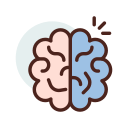
Text
Stop!! child trafficking
Child trafficking is about taking children out of their protective environment and preying on their vulnerability for the purpose of exploitation. Although no precise figures exist, the ILO (in 2005) estimated that 980,000 to 1,225,000 children - both boys and girls - are in a forced labour situation as a result of trafficking. ILO Convention No. 182 (1999) on the Worst Forms of Child Labour (WFCL) classifies trafficking among “forms of slavery or practices similar to slavery” and thereby a WFCL to be eliminated as a matter of urgency, irrespective of the country’s level of development.
The trafficking in children - internally in countries, across national borders and across continents - is closely interlinked with the demand for cheap malleable and docile labour in sectors and among employers where the working conditions and the treatment grossly violates the human rights of the children. These are characterized by environments that are unacceptable (the unconditional worst forms) as well as dangerous to the health and the development of the child (hazardous worst forms). These forms range from bonded labour, camel jockeying, child domestic labour, commercial sexual exploitation and prostitution, drug couriering, and child soldiering to exploitative or slavery-like practices in the informal industrial sector.
As part of larger initiatives to combat the worst forms of child labour, the ILO’s International Programme on the Elimination of Child Labour (IPEC) works with governments, workers and employers’ organizations and NGOs to fight child trafficking It works with them to offer broad protection to children at risk and victims, prevent the crime of trafficking, enforce laws and prosecute traffickers, and assist victims in need. Where appropriate, services are offered at source, in transit and at destination. The Programme takes into account the national, sub-regional and regional specificities of the root causes of children’s vulnerability, mechanisms and routes used by traffickers, and the nature of exploitation that takes place, as well as the legal and cultural contexts.
Availability
| KP.IV.00011 | KP.IV.3 IND s | My Library | Available |
Detail Information
- Series Title
-
-
- Call Number
-
KP.IV.3 IND s
- Publisher
- Jakarta : Trafficking in children--south asia (TICSA)., 0
- Collation
-
12 hlm. : ilus. ; 23 cm.
- Language
-
English
- ISBN/ISSN
-
-
- Classification
-
KP.IV
- Content Type
-
-
- Media Type
-
-
- Carrier Type
-
-
- Edition
-
-
- Subject(s)
- Specific Detail Info
-
-
- Statement of Responsibility
-
-
Other version/related
No other version available
File Attachment
Comments
You must be logged in to post a comment
 Computer Science, Information & General Works
Computer Science, Information & General Works  Philosophy & Psychology
Philosophy & Psychology  Religion
Religion  Social Sciences
Social Sciences  Language
Language  Pure Science
Pure Science  Applied Sciences
Applied Sciences  Art & Recreation
Art & Recreation  Literature
Literature  History & Geography
History & Geography